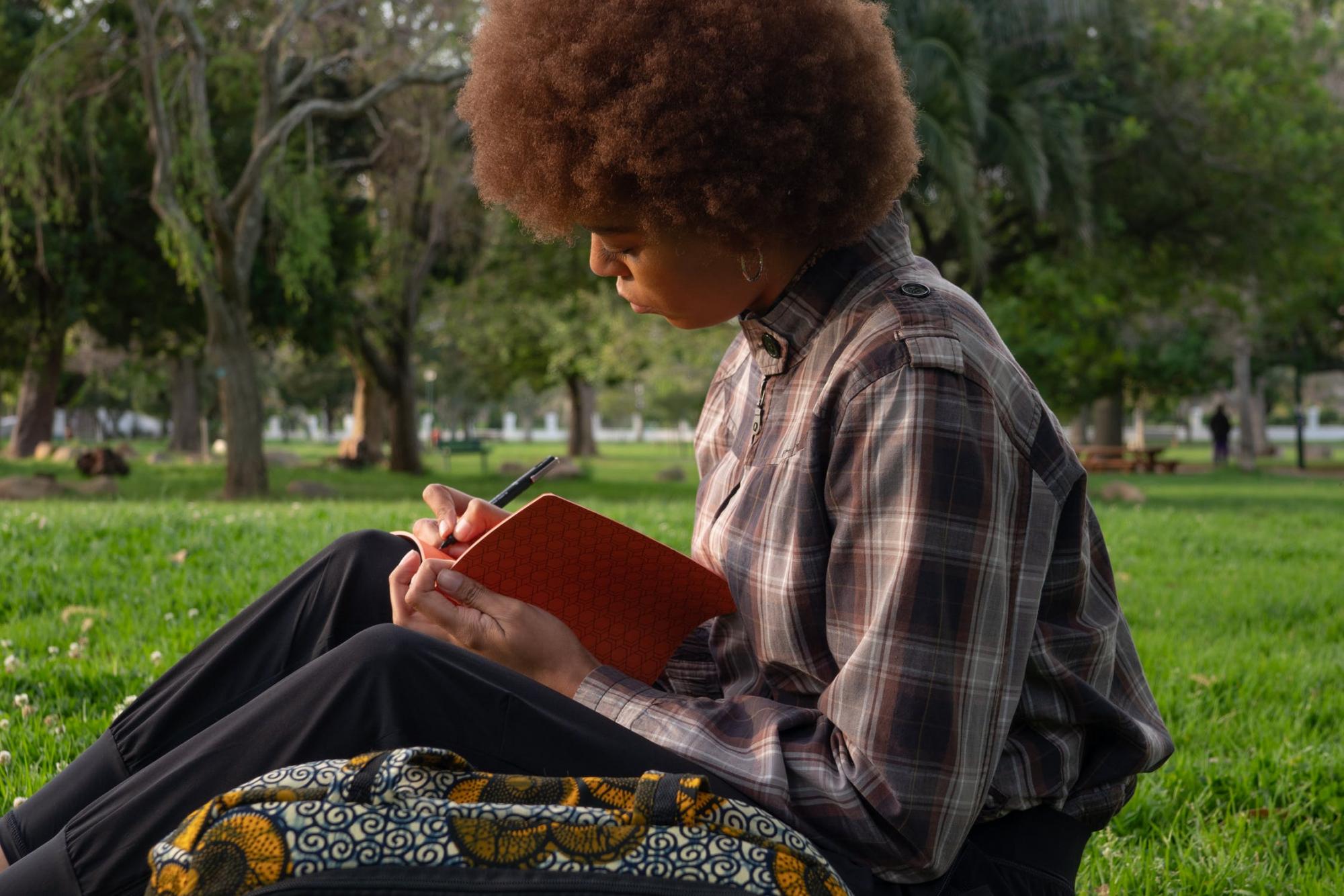Freewriting is creating an intentional space for unstructured. This writing is uncensored and has no other purpose than to allow creative, free associative thinking. It’s important that it’s done on paper, to allow the mind-body connection as well as to insure that built-in censors of our computer programs don’t interfere. Silence the critical “eye/I” and allow yourself to write down thoughts as they appear. Don’t question them and don’t stop writing. Don’t worry about spelling, choosing the right word, or jumping from topic to topic. In fact, this rapid transition of topics is a value of freewriting. For example, you might begin writing about your dog’s fur and the next thing you know, you’re ending with a thought about your friend’s voice, which just might lead you later to the phone.
With freewriting, one thought stimulates new thoughts and as you gain further experience, the next thing you’ll see is the discovery of new ideas and/or the consistency of certain topics prevailing your thoughts. If you’re having challenges with a writing assignment, freewriting gets you out of that forced, stressful “productive” state into relaxing with writing. You just might find yourself opening up to allow yourself to return to the writing task. Begin changing your vision or your environment to see how your writing is affected.
Getting Started:
- Find a notebook, a blank journal, or a legal pad. Get a comfortable pen or pencil. If you insist, go ahead and use your laptop – but turn off controls.
- Set a time that you write daily. It might be with morning tea/coffee or it might be before sleeping. Turn off your devices, no interruptions for at least 10 minutes.
- Don’t stop writing. If you stumble and don’t know what to think. Just write that or scribble. Don’t worry, something will rise to your conscious mind.
- Write till you become distracted. Don’t worry about writing for a set period of time. If you’re new to this, you’ll begin with shorter periods.
- After freewriting, always take a minute to read and appreciate your writing. Allow yourself to be surprised at the random thoughts – all great evidence of our wild imagination.
Here’s a list of 30 freewriting prompts. You may do them in order, or just do your own thing. When in doubt, just return to the genuine freewrite of #1. There are no rules with the prompts. These aren’t assignments, and there’s no expectation on the result. Remember, the purpose is to unleash creative thought through writing. Have fun!
Day 1: Start out simply: Just write and allow the thoughts to flow for a few minutes. Begin writing and permit your mind/writing to jump around. Once you get distracted, stop writing.
Day 2: Change your writing position, write standing up or lying down. Write for 8 minutes without stopping.
Day 3: Clear your mind, take a deep breath, and write down the word that comes first to your mind. Don’t worry about impressing another of your sophisticated vocabulary here. This is a freewrite. Enjoy what comes to you.
Day 4: Think about a favorite fruit in all senses: taste, touch, sight, smell, and sound. Describe it with these in mind. Then, notice your body’s reactions. Write all that down quickly allowing your mind to drift to other thoughts.
Day 5: Upon waking: Place your book next to your bed, and pick it up before rising for the day. Simply write or reflect about a dream you had. Write quickly so that you
Day 6: Look outside the window. What do you see? Write quickly what visuals you pay attention to. Move from the detail of those specifics to how you feel.
Day 7: Think about a pet – could be your own, one in a book or movie, or owned by a friend. Whatever comes to mind, begin by describing its physical features, then move to the personality. Just write.
Day 8: Kitchens are wonderfully rich places for ideas on what to write about. Sit at your kitchen table/counter and write down all that you see. What grabs your attention?
Day 9: What sounds do you hear outside? Create a list and then allow your mind to drift from the auditory.
Day 10: Sit in a dark room. Take a couple of deep breaths and then begin writing whatever comes to mind.
Day 11: Gaze at your hands. What do they reveal about you?
Day 12: Have music on and let your thoughts drift. Write about how music contributes to your life. Then allow your thoughts to flow.
Day 13: Smile into the mirror. Gaze at your image and without a second to lose get into a comfy place and begin writing.
Day 14: Get active and do something physical (even shrugging your shoulders counts here) for a minute, now sit down and write.
Day 15: Take a walk in nature, even if it’s imagined. What really resonates for you while in nature? Describe that image and the feeling you have. Let your mind wander down a nature path.
Day 16: Write down your favorite color. Look at the word, visualize the color and all that you associate with it. Begin by listing those things and then begin writing.
Day 17: Find or imagine a shiny object. Look at it, examine it, and then let the thoughts get onto paper.
Day 18: Gratitude: say the word out loud. Reflect for a minute. Now write.
Day 19: Alphabet soup: do you have a favorite letter? If so, write it down and then begin listing why it’s favored. Or let’s play with the alphabet, begin with a and see how far you go. List words, names, towns, for each letter of the alphabet. Stop that focus once your mind moves to another thought. Continue writing.
Day 20: How do you know spring (or any season) has arrived? Write that down and begin by describing it. Allow the thoughts to spring forth with new ideas!
Day 21: What’s your favorite word? Write it down, reflect upon it, and now write about the thoughts that are elicited.
Day 22: Sit in your favorite chair. Really sit. Describe it and how it makes you feel.
Day 23: Find a textured cloth like a blanket or towel. Press and move your hand across it. Stop and begin writing. Allow thoughts to rise to the surface (pun intended!).
Day 24: Lie on the floor, bed, or sofa and gaze up at the ceiling. Move your eye from corner to corner. Breathe deeply. Now write.
Day 25: Have a sip of a beverage (tea, coffee, water) and allow the liquid to sit in your mouth. Savor it. Swallow. Now write.
Day 26: Sit with feet firmly on the floor or ground. Move them up and down for a few seconds. Now plant your feet again. Breathe and now write.
Day 27: Find a photo – one of your own or from a magazine – gaze at it for about 20 seconds. Now focus on recalling what’s in the photo. Allow your writing to move from the details to general impressions.
Day 28: Think about laughter and the last time you laughed out loud. Smile in reflection. Now write.
Day 29: We all have a particular flavor we love. Is it salty? Sweet? Savory? Reflect for a minute. Write the flavor that comes immediately to mind and write about it.
Day 30: Reflect back to a childhood activity that brought you joy. Write it down and now go down memory lane describing this younger version of yourself in play.
Repeat . . .

